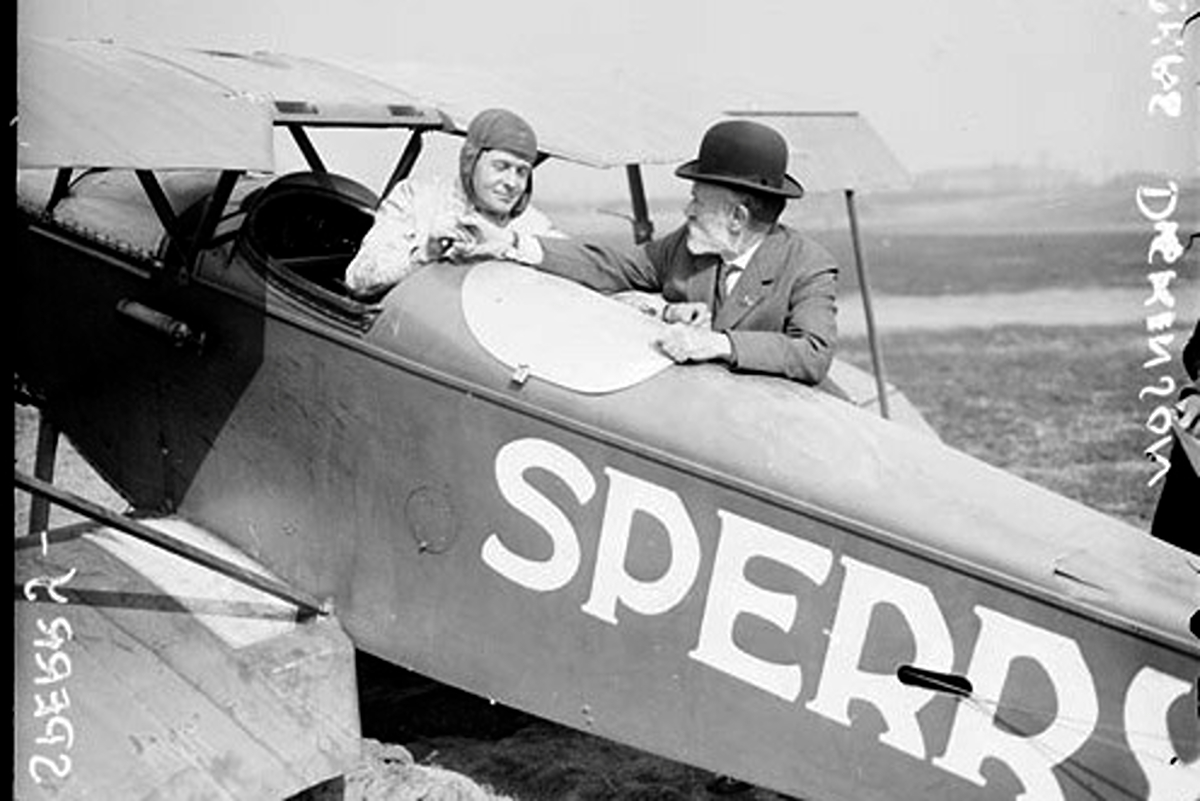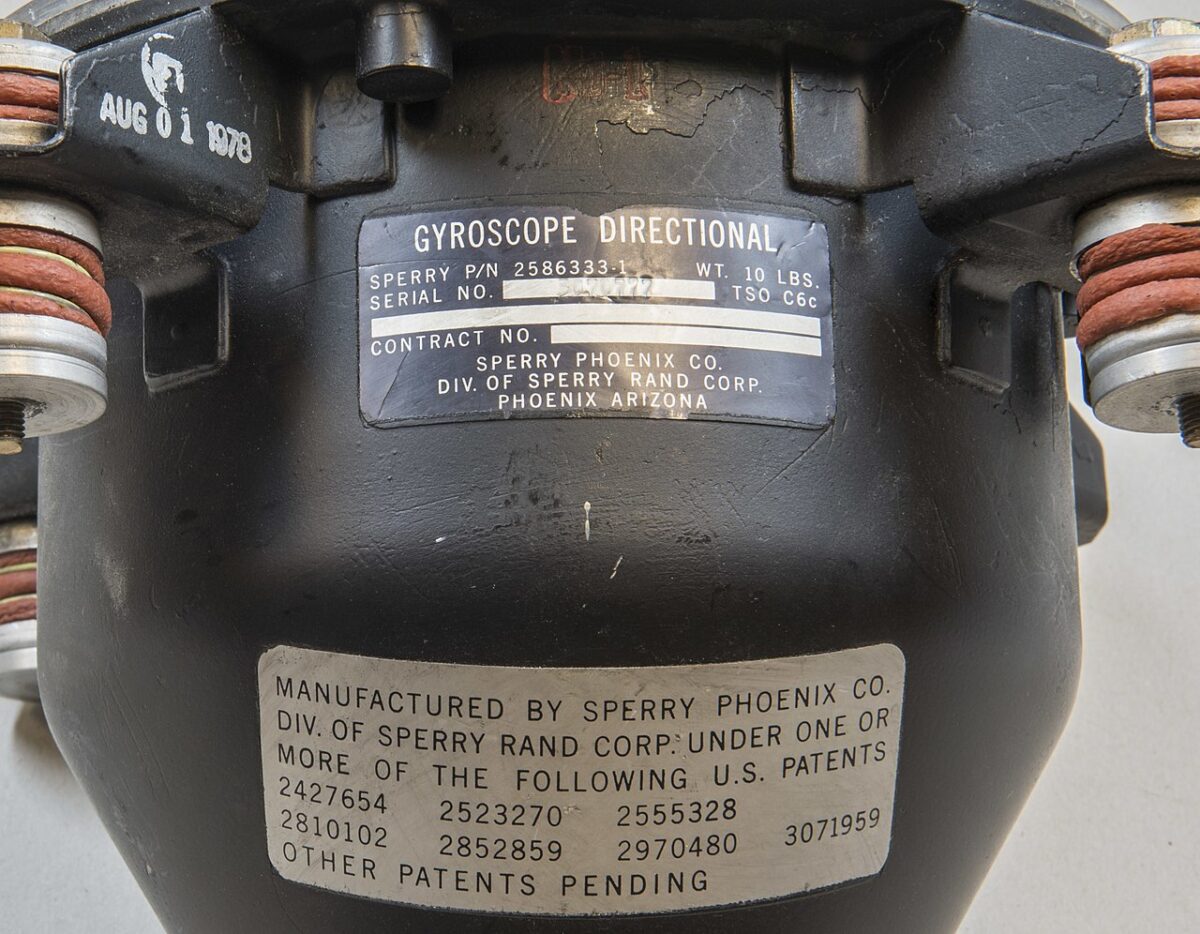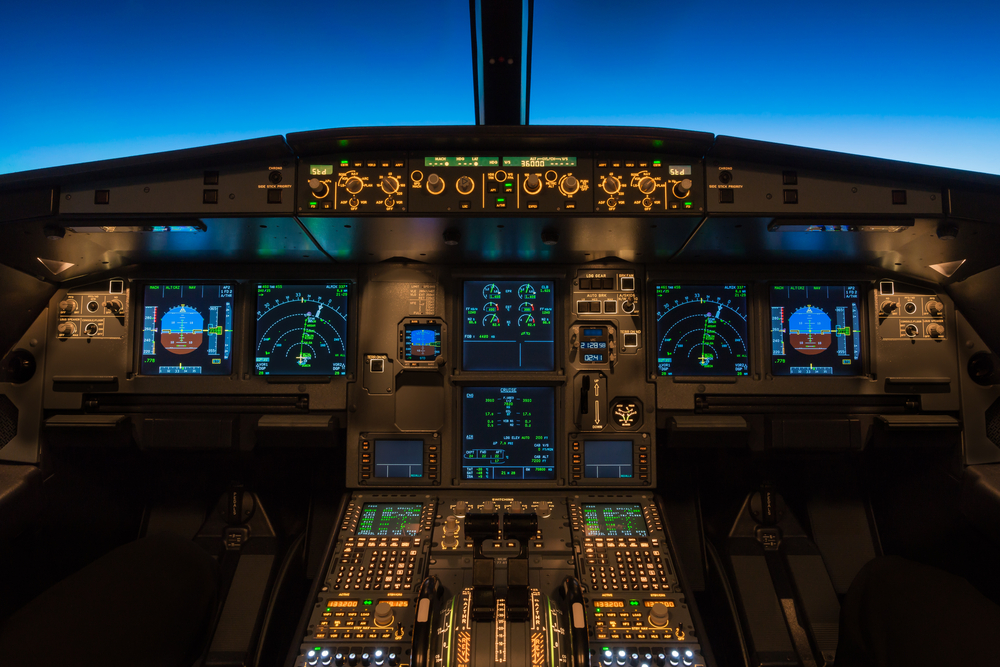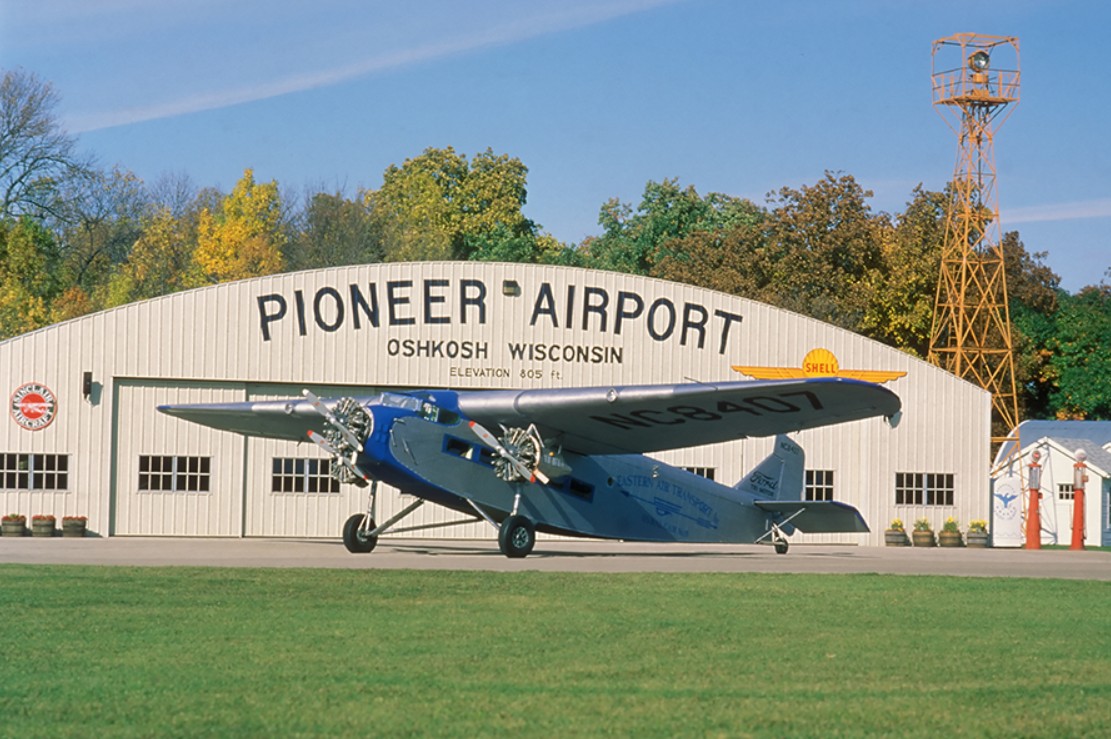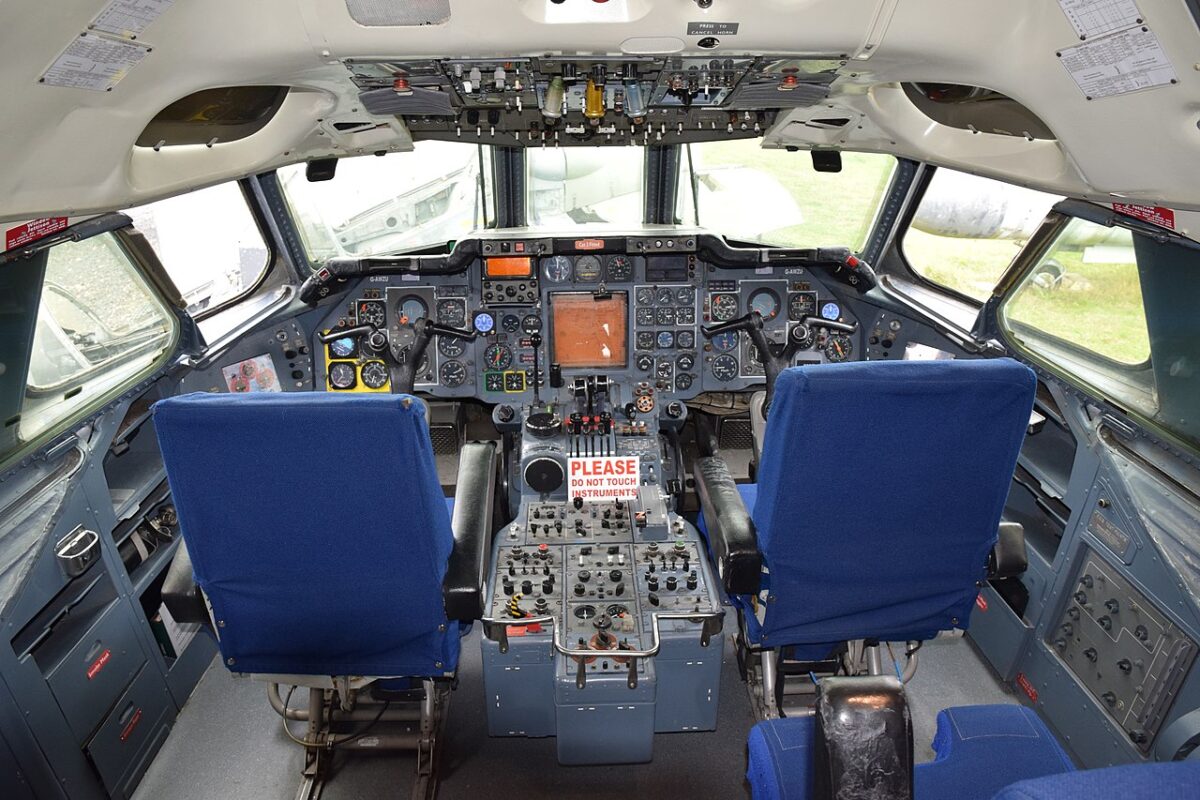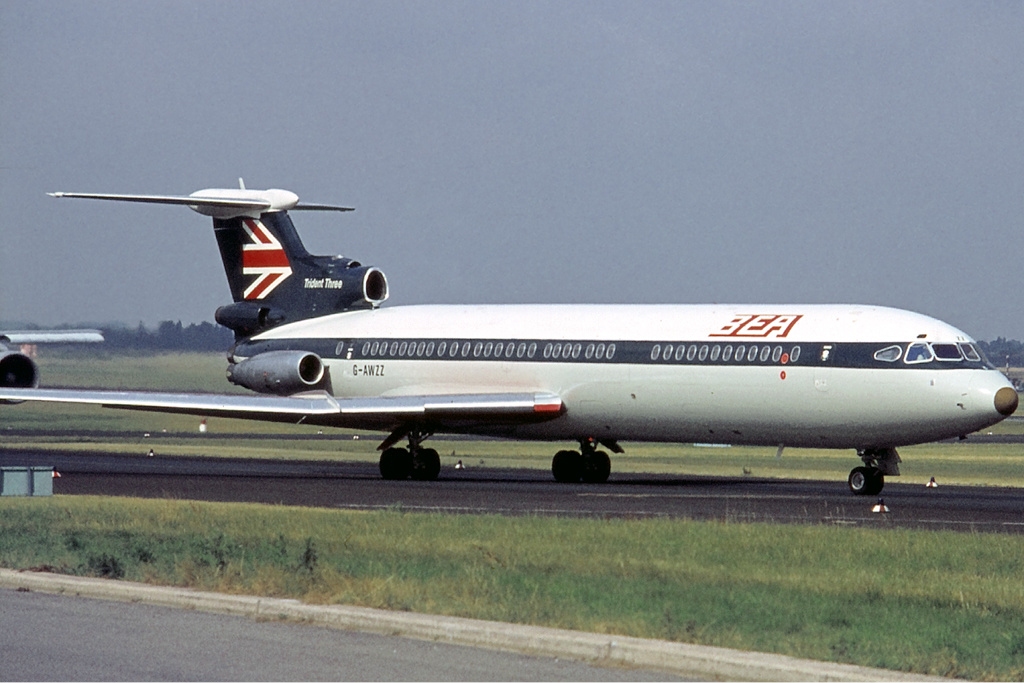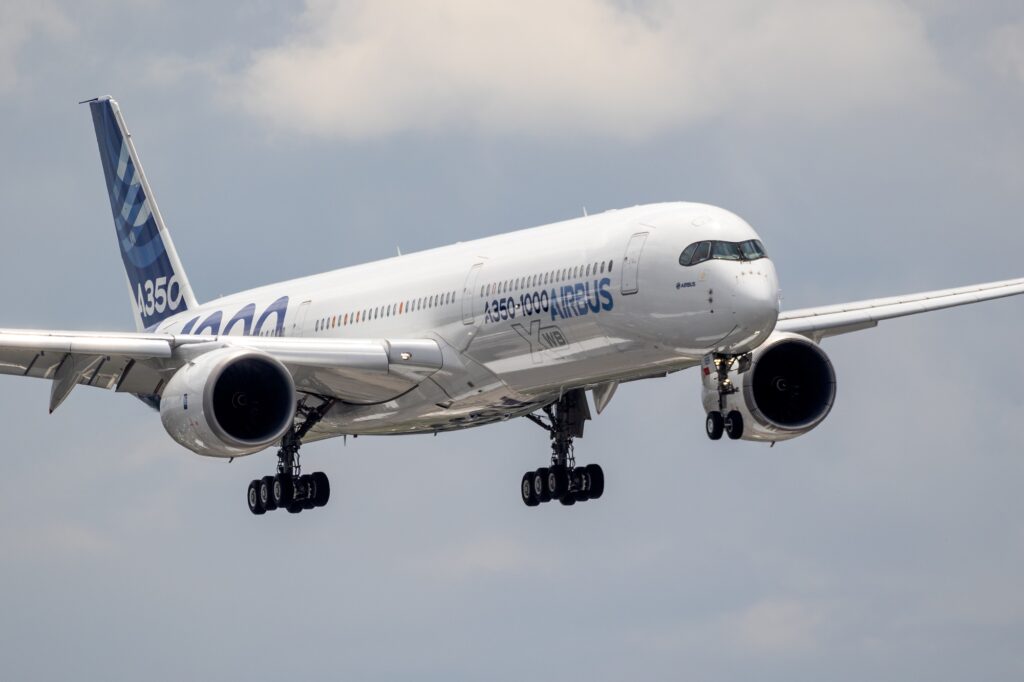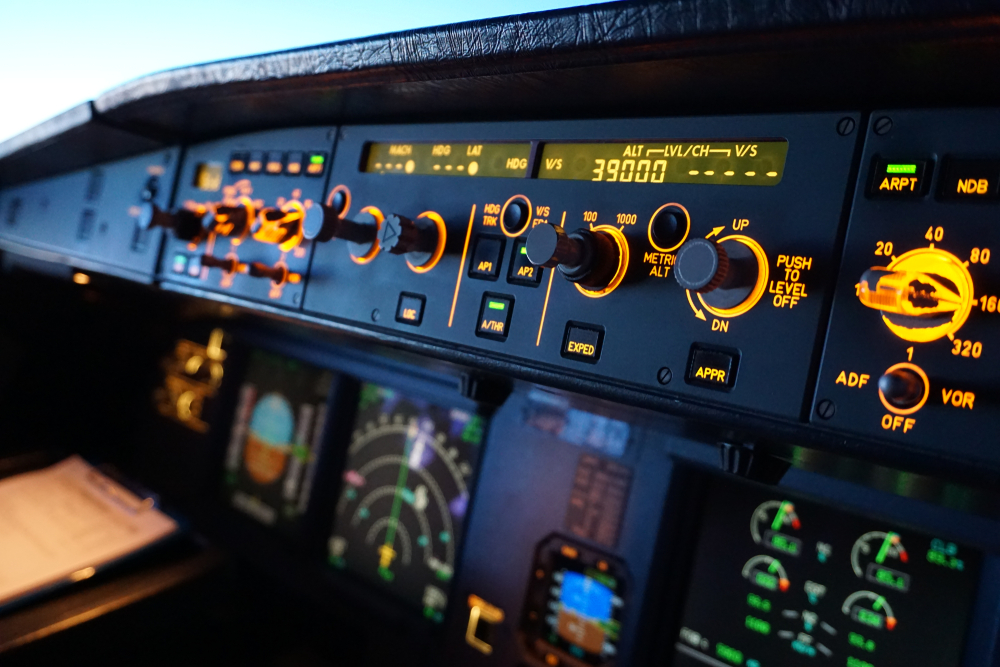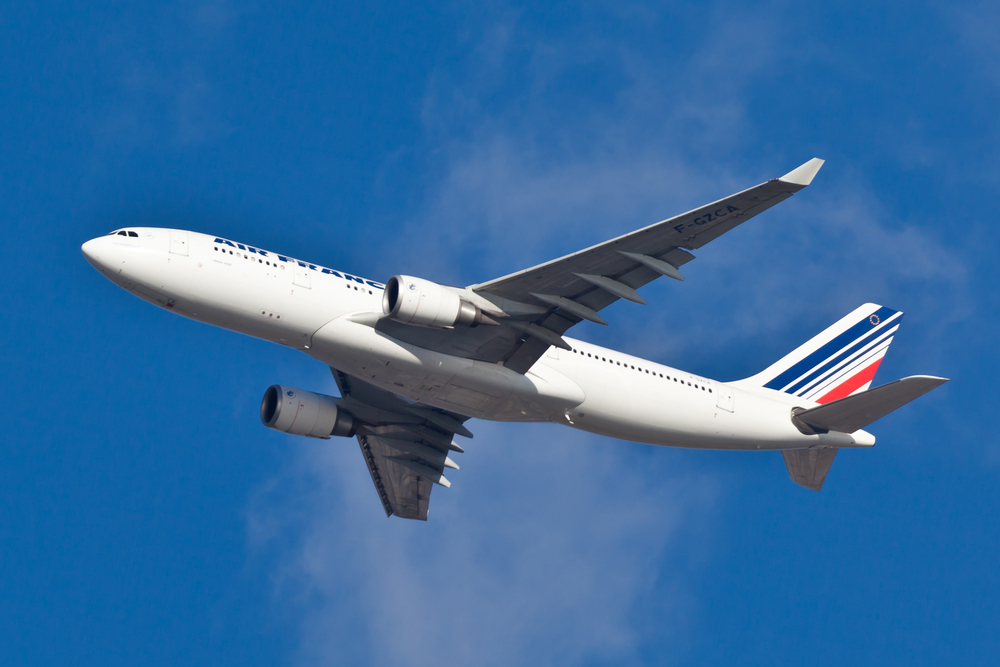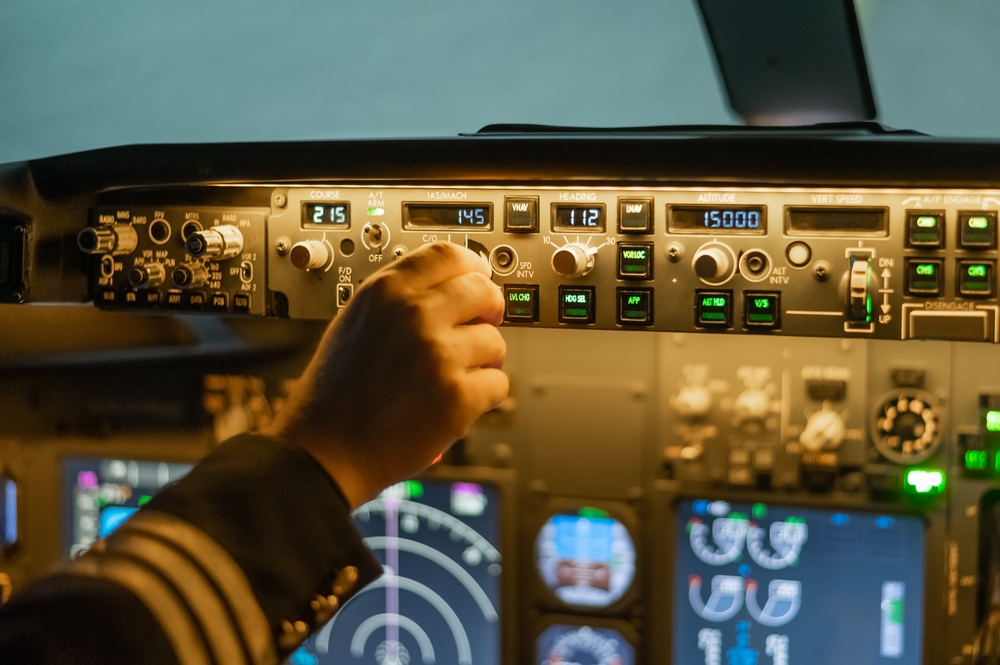The automatic pilot (‘autopilot’) has to be one of aviation’s finest technological inventions. Yet, it is also one of the earliest, having been introduced (in its most rudimentary form) in 1912, just nine years after the Wright Brothers first took to the air in their powered Wright Flyer in 1903.
Since those early days, the autopilot has developed enormously, both in terms of capabilities and functionality. Nowadays, modern aircraft are equipped with systems that can not only fly the aircraft but can also perform fully automated take-offs and landings and can even provide protection systems in the event of unusual flight situations that threaten the safety of the airplane and its occupants.
Largely gone are the days when pilots had to manually control their aircraft from engine start-up to shut down by keeping their hands rigidly fixed on the controls at all times. However, the development of the autopilot has not come without its drawbacks, either. Some high-profile accidents have been caused either by autopilot errors or by pilots misinterpreting what the autopilot was doing, with catastrophic effects.
Yet despite this, the advancement of autopilot has made flying, whether that be in a small light aircraft or an Airbus A380, the experience it is today. AeroTime takes a look back at the development of automatic pilot systems, from its early days before the First World War, all the way to its modern-day equivalent, and how a flight of 18 hours or more can be conducted safely with the pilots barely having to manually manipulate the flight controls at any stage of that process.
What is an autopilot?
In the years following the Wright Brothers’ pioneering work of establishing the principles of powered flight, aeronautical engineers were keen to exploit the new technology and develop expertise to broaden the possibilities of what could be achieved by flying. With the demand for longer flights rising, and the desire to send mail at first, and later passengers by air over greater distances, there was a need to reduce the pilot workload over such journeys. The limits of human manual dexterity and pilot fatigue were the two early prohibiting factors from air carriers conducting longer flights.
Relentless concentration was required by the pilots flying the early aircraft, and any lapse could have fatal results. The requirement for technology that could relieve the pressure from piloting on longer flights was therefore crucial. As a result, the first autopilot was developed to introduce an element of control on the trajectory of airplanes.
In simple terms, an autopilot assists in the control of the aircraft while the pilot takes care of aspects requiring judgment. Allowing the pilot to concentrate on broader aspects of flight, the autopilot takes control of the flight trajectory of the aircraft, normally managing the three basic dimensions of flight – pitch, roll, and yaw.
An autopilot allows the aircraft’s progress to be controlled autonomously, without the manual input of the controls by a human being. However, it is important to note that an autopilot normally must be engaged and disengaged with human input, and generally speaking, the autopilot is there to act as an aid to the pilot, rather than a replacement for them.
Early development of the autopilot
In 1912, an American inventor by the name of Elmer Ambrose Sperry, working in collaboration with a German physicist, Hermann Anschütz-Kaempfe, proposed a system that would allow a moving vehicle (of any type) to maintain a pre-set course. The operation of this new system would be based on connecting one or more gyroscopes and a compass to the control elements of the vehicle in question. With the theory having been successfully demonstrated by the two men, their new system was installed and used on several dozen US Navy vessels and won them immediate worldwide acclaim for its reliability and performance.
With the theory of the autopilot proven and established, it would be Elmer Ambrose Sperry’s son, Lawrence Sperry, who would take on the task of developing a light-weight version of his father’s invention that could be used to control aircraft. A keen aviation enthusiast himself, Lawrence Sperry could already see the advantages that perfecting an autopilot system for aircraft could have to expedite the development of aviation.
Lawrence Sperry believed that the three flight axes of an aircraft (roll, pitch, and yaw) could be simultaneously controlled by an automatic system if it employed one or several gyroscopes as a reference, maintaining the aircraft’s orientation and state. Sperry had to devise a method by which the aircraft’s control surfaces could be physically linked to gyroscopes, which would allow automated corrections to be made to the flight profile based on the angle of deviation between the flight direction and the original gyroscopic configuration.
Sperry’s invention was known as a ‘gyroscopic automatic pilot’, later simply referred to as “George,” by many aviators. Its innovation was to automatically balance the airplane in flight, thus relieving the pilot from manually having to control the flight control surfaces freeing them up to monitor the engine instruments and carry out other tasks while flying.
Sperry’s first autopilot was born from the concept of assisting pilots during longer flights and reducing their workload, both physical and mental. Flying for extended periods of time at the controls of a basic aircraft was hard physical work, and poor weather or mechanical issues could also add to pilot fatigue on longer flights.
The gyroscopes to be used by Sperry in developing the aviation autopilot would require electrical power to maintain their rotational speed of around 7,000 rpm. However, Sperry solved this use through the use of a wind-driven generator situated on the aircraft’s wing to provide the necessary power. With aircraft performance still largely limited by engine capacity and weight, Sperry’s new autopilot system had to be compact and light. He managed to reduce the overall size of his first autopilot system to just 18 kilograms (39.6 lbs) in weight and the size of a small suitcase of approximately 45 x 45 x 30 centimeters.
Demonstrating Sperry’s new invention
With his new autopilot system developed, it needed to be demonstrated with its potential advantages being publicized to a wider audience. Sperry himself would take on this task, displaying the system’s operation at the Concours de la Securité en Aéroplane (Airplane Safety Competition), which was held in Paris in early 1914.
The 56 aircraft that participated in the 1914 competition presented a wide range of aviation innovations, ranging from assisted starting mechanisms, automatic carburetors, basic stabilization systems, and many other innovations that purported to benefit aviation safety. While the majority of exhibitors originated from France, others, including Sperry, also saw the competition as a perfect platform from which to launch their ideas.
Sperry’s innovation was presented at the competition installed in a Curtiss C-2 single-engine airplane with a hull-shaped lower fuselage. His system would provide an aircraft with automatic stability and control mechanism, through the control of the ailerons, stabilizer, and tail rudder through the use of a set of simple gyroscopes. Sperry demonstrated the system on the Curtiss C-2 accompanied by Emil Cachin, a French mechanic.
When Sperry’s demonstration slot began on June 18, 1914, the Curtiss C-2 took flight from the Buc airfield located near Paris and headed along a pre-designated route along the River Seine, where thousands of spectators and the judging panel had gathered along the riverbank. However, fully convinced of his invention’s capabilities, this was to be no ordinary display.
Once lined up along the river and with the aircraft flying straight and level, both men onboard the aircraft raised their hands to demonstrate that the aircraft could maintain its flight without any manual input from them. In a second pass in front of the judging panel, and during a demonstration of unfathomable danger, Cachin climbed onto one of the aircraft’s wings, while Sperry placed his hands on his head. As the French mechanic slid himself along the wing of the aircraft, shifting its center of gravity, the aircraft became unbalanced. However, with the gyroscopes kicking in at this point, the aircraft corrected the weight shift by itself, without Sperry intervening.
Still not satisfied that his system had been fully demonstrated, despite the wild excitement of the crowds on the banks below, in a final pass, both crew members climbed onto the wings to wave to the spectators, proving beyond any doubt just how reliable Sperry’s new autopilot system was. With the demonstration flying display complete, one of the judges boarded the aircraft to validate the system in the air. Sperry conducted one last short flight in which he demonstrated how his plane could take off and land being partially controlled by his new invention.
The subsequent announcement of the results of the competition saw Sperry take first prize, and walk away with the 50,000 francs prize money, along with international acclaim.
The Sperry Corporation went on to develop other gyroscopic instruments, including the artificial horizon and the heading indicator. These systems continue to be fitted in many current today. Even the most automated aircraft, such as the Airbus A350, the Boeing 787 Dreamliner, and the F-35 military jet, come with such instruments fitted as standard should an electrical failure affect the more modern cockpit display screens.
Further advancements
As Sperry was developing his autopilot system, another organization, the Societé de Production Armand Deperdussin had developed a central control lever that could operate ailerons and stabilizers, as well as pedals that could control the rudder. Previously, in early aircraft, each employed different control systems and mechanisms to manipulate the flight control surfaces, with pilots having to understand the flying characteristics of each type. The Deperdussin invention would simply this process, making the operation of aircraft control surfaces somewhat more uniform, and would significantly complement the efficacy of Sperry’s autopilot.
As the interest in and the development of such systems accelerated in the years between 1914 and 1918, early work began on developing the world’s first unmanned aerial vehicle (UAV) which would be guided toward a specific target through the use of gyroscopes. However, with the First World War requiring the expertise of aeronautical engineers globally to boost the war effort, this project was shelved, at least for the time being.
Post-war autopilot development
With the First World War over by 1918, engineers and inventors would once again turn their attention to the automation of flight. The period saw the introduction of a technology referred to as a ‘pilot’s assister’, which, unlike Sperry’s early gyroscopic design, used a pneumatically-spun gyroscope to manipulate an aircraft’s flight controls. The technology was introduced by the United Kingdom’s Royal Aircraft Establishment in 1930.
The further development also included the introduction of hydraulically powered servomechanisms and other advancements that, while increasing the complexities of automated systems, would allow for the simplification of flight in adverse weather conditions or at night, leaving pilots to concentrate on overall flight safety. Sperry’s autopilot system became particularly popular during the 1920s and 1930s as airline transport took off and people began to travel more and further afield.
Indeed, legendary aviator Howard Hughes installed one on the Lockheed Electra aircraft he used to set a new world record for circumnavigating the globe in three days and 19 hours. Hughes’ plane also happened to be fitted with innovative radio and navigational equipment, including a ‘navigation robot’ invented by WL Maxon, which could calculate the aircraft’s exact geographic location.
With the start of World War Two in 1939, which the US would join in 1941, the use of gyroscopic autopilots and navigation computers became far more common, which maximized the capabilities of many aircraft types.
Commercial applications
After the war came the boom in commercial air travel, and even more demand for flight automation as sector lengths increased rapidly. Throughout the 1950s, 1960s, and 1970s, studies showed that an increasing number of fatal aircraft accidents resulted from human error rather than mechanical failure, so increased automation was pursued as the primary means to make air travel safer.
Even during the 1950s, commercial aircraft would employ five crew members in the cockpit comprising two pilots, a flight engineer, a radio operator, and a navigator. Over the next few decades, with airlines needing to cut costs, automation, and improved technology would eventually make those not flying the aircraft redundant, with the introduction of the Boeing 747-400 in 1989 being the first long-haul aircraft that finally eradicated the need for even a flight engineer.
In June 1965, the Hawker Siddeley Aircraft Company of the UK introduced its new Autoland system on a British European Airways Trident at London Heathrow Airport (LHR). Developed and supplied by Smiths Aircraft Industries, its autoland system was a pioneering feature that allowed crews to operate in almost zero visibility conditions. This permitted the Trident to be guided automatically to an airfield, approach the runway, flare, touchdown, and then roll out from the landing runway without a pilot interfering with the controls.
The introduction of automated landing capability was the next big development in autopilot and would go on to revolutionize aircraft operations in low-visibility conditions, a technology that is still in use today.
Then, in 1986, Airbus demonstrated the first incarnation of a fully automated ‘fly-by-wire’ system on a testbed A300 widebody. Fly-by-wire (FBW) is the generally accepted term for those flight control systems that use computers to process the flight control inputs made by the pilot or autopilot and send corresponding electrical signals to the flight control surface actuators.
The Fly-by-wire arrangement replaces mechanical linkage and means that the pilot inputs do not directly move the control surfaces. Instead, inputs are read by a computer that in turn determines how to move the control surfaces to best achieve what the pilot wants in accordance with which of the available flight control laws is active. Fly-by-wire technology has also become commonplace, ensuring that the aircraft remains both safe and flyable in even the most extreme of circumstances, and is thought to have saved hundreds of aircraft from potential accidents over the years.
The process of flight can be divided into seven crucial stages – taxi, take-off, climb, cruise, descent, approach, and landing phases. Until recently, modern autopilot using computer technology has been capable of automating all these stages except taxi and take-off. However, on January 16, 2020, Airbus successfully performed the first fully automatic vision-based take-off using an Airbus Family test aircraft at Toulouse-Blagnac Airport (TLS) in France. The advanced technology of the aircraft was fully exploited with the pilots simply monitoring the aircraft’s performance.
Modern-day autopilots
The modern autopilot is now commonplace in many aircraft, including even the most basic training aircraft and helicopters, too. However, there are still some smaller and older aircraft that remain hand-flown with traditional stick-and-rudder flight controls that require 100% manual input. There are even some smaller commercial passenger planes, such as the Britten-Normal Islander, that are supplied without autopilots as such types are only designed for very short flight sectors. Generally speaking, a commercial airliner must be equipped with an autopilot if it has a capacity of 20 passengers or greater.
Unlike historic autopilot, modern-day autopilot embraces computer software to control many aspects of the airplane, as seen in many modern aircraft types, both civil and military. There are three basic levels of control used in the modern autopilot-
A single-axis autopilot that controls an aircraft in the roll axis only.
A two-axis autopilot controls an aircraft in the pitch axis as well as roll, with limited pitch oscillation-correcting ability. It may receive inputs from onboard radio navigation systems to provide true automatic flight guidance once the aircraft has taken off until shortly before landing, or its capabilities may lie somewhere between.
A three-axis autopilot adds control in the yaw axis as well as pitch and roll, giving fully automated flight control capability in all three flight axes.
These three levels of control are ascending in their level of aircraft control and capability. Generally speaking, it is only a three-axis autopilot that is used in the more modern and complex aircraft, but which adds the most capability to the cockpit and reduces pilot workload the most – the initial goal for Sperry’s first gyroscopic automated system.
Has automation gone too far?
There can be no doubt that the invention of the autopilot has revolutionized aviation since it was first invented by Lawrence Sperry in 1912. Not only has it allowed aircraft and their crews to fly faster, further, and safer, but it has effectively shrunk the world through the ability to take long-haul flights with as few as two of three cockpit crew members onboard.
However, in more recent times, there have been arguments that the reliance on cockpit automation has gone too far. In June 2009, an Air France Airbus A330 flying from Rio De Janeiro to Paris crashed into the Atlantic Ocean killing all 228 passengers and crew onboard. The subsequent accident report found that mishandling by the pilots ultimately led to the aircraft entering a stall from which they were unable to recover.
/ Wikimedia Commons
It was determined during the investigation that the aircraft’s autopilot had suffered temporary inconsistencies in the airspeed measurements it was receiving from the aircraft due to icing accumulating inside the pitot tubes on the exterior of the aircraft. These inconsistencies caused the autopilot to disconnect.
The crew reacted incorrectly to this, causing the aircraft to enter an aerodynamic stall which the pilots failed to correct. Opponents of aircraft automation later argued that the over-reliance on cockpit automation had come at the expense of basic flying skills, with the Air France crew unable to identify a developing stall or have the expertise to recover the situation effectively.
Summary
Modern-day autopilots incorporate many capabilities that Sperry would have never imagined when he proudly (and spectacularly) displayed his first invention in Paris in 1914. Such new developments include aircraft maintaining a pre-set cruise speed, accelerating or reducing speed in a-pre-programmed manner, tracking a route plan input into the navigation computer by the flight crew before departure, or even aligning the aircraft with the runway, and performing a fully automated take-off or landing.
Yet, the principles of the autopilot remain the same as in Sperry’s day, and his contribution to modern-day air travel cannot be disputed. The advancement of autopilot from a basic gyroscopic-based instrument to modern-day computers that are capable of manipulating all phases of flight is a transition that many remain in awe of.
In little over a century, the enormous capabilities of cockpit technology and automation have seen pressures relieved from pilots to continue improving the safety of flight. But in an age where the development in computer technology is unrelenting and the desire by growing numbers of us to travel by air continues to surge, where the path of cockpit automation will lead us in the future is anyone’s guess.



